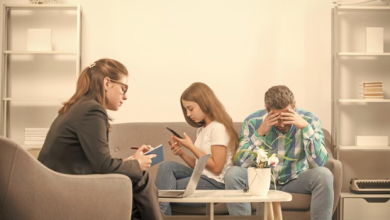A Holistic Approach to Dealing with Separation Anxiety in Dogs
Dealing with Separation Anxiety in Dogs

Do you notice your dog starting to get nervous when it’s time for you to leave your house? Whether you’re leaving for work or to run any errands, your dog does not know where you are going, and when it sees you getting dressed to leave, it may start acting out. If you often come home to your dog making a mess; chewing shoes, ripping carpets and couches, and you think it’s exhibiting bad behavior, you may be wrong. These are all signs of separation anxiety. Yes, dogs can also develop separation anxiety, most often when it comes to their owners. Let us tell you more about dealing with separation anxiety in dogs.
What is it?
Separation anxiety is an ordinary behavioral problem in many dogs. It happens when dogs are separated from their owners or left alone and get distressed or nervous. This disorder can result in destructive behavior, excessive barking, and even self-injury.
It happens when dogs are separated from their owners or left alone and get distressed or nervous. This disorder can result in destructive behavior, excessive barking, and even self-injury.
The majority of dogs that suffer from separation anxiety prefer to stay close to their owners, accompanying them from room to room and spending little time outside alone. The most important thing to do before assuming your dog has anxiety is to reach out to your veterinarian. Your vet can rule out any medical problems that could also be the reason for your dog acting out.
Symptoms of Separation Anxiety in Dogs
1. Destructive Behavior:
Dogs with separation anxiety may engage in destructive behaviors such as chewing furniture, scratching doors or walls, or tearing apart household items in an attempt to cope with their anxiety.
2. Excessive Barking or Howling:
Dogs suffering from separation anxiety often vocalize excessively when left alone. This behavior is their way of expressing distress and seeking attention from their owners.
3. House Soiling:
Another common symptom of separation anxiety is inappropriate elimination, such as urinating or defecating indoors, even when the dog is house trained. This behavior is a manifestation of the dog’s anxiety.
4. Pacing and Restlessness:
Dogs with separation anxiety may exhibit restless behaviors, such as pacing back and forth, repeatedly checking doors and windows, or being unable to settle down.
5. Escape Attempts:
In severe cases, dogs may attempt to escape from their confinement, leading to injuries or damage to property. This behavior is driven by their desperate need to find their owners.
Causes of Separation Anxiety in Dogs
There can be a variety of reasons why a dog can develop separation anxiety:
1. Change in Routine or Environment:
Dogs are creatures of habit, and any change in their routine or environment can trigger separation anxiety. These changes may include moving to a new home, a change in work schedule, or the absence of a family member.
2. Past Traumatic Experience:
Dogs, especially adopted dogs or senior dogs, that have experienced abandonment, neglect, or traumatic events in the past are more prone to develop separation anxiety. These experiences create a fear of being left alone or separated from their loved ones.
3. Lack of Socialization:
Insufficient socialization during a dog’s early development stages can contribute to separation anxiety. Dogs that have not been exposed to different environments, people, and other animals may become overly dependent on their owners.
4. Over-Attachment:
Dogs that are excessively attached to their owners may struggle with separation anxiety in dogs. This attachment can stem from over-dependence or being overly pampered and not given enough opportunities for independence.
Solutions: How to treat your dog’s separation anxiety
Treating your dog’s anxiety can depend on factors such as the dog’s age or how severe the separation anxiety is. Contact your vet to figure out which solution you should go ahead with. Some of these solutions include:
1. Gradual Separation:
Help your dog become comfortable with being alone by gradually increasing the duration of separation. Start with short periods, and gradually extend the time over several days or weeks. Reward calm behavior and create positive associations with being alone. This can work wonderfully on new puppies.
2. Environmental Stimulants:
Provide your dog with stimulating toys, interactive puzzles, and treat-dispensing devices to keep them engaged and mentally stimulated when alone.
3. Positive Reinforcement Training:
Reward your dog with treats, praise, or playtime when they display relaxed behavior during separation.
4. Create a Safe Space:
Designate a specific area in your home, such as a crate or a cozy corner, where your dog feels safe and secure. Make this space comfortable with blankets, toys, and familiar scents. This designated area can serve as a sanctuary for your dog during alone time.
5. Seek Professional Help:
If your dog’s separation anxiety is severe or persists despite your efforts, consult with a professional dog trainer or a veterinary behaviorist.
The Takeaway
To conclude, separation anxiety in dogs is quite common in dogs, especially pups. There are a few reasons why your dog may be suffering from anxiety. Figure out how to help your furry friend through a variety of different methods, and if the issue persists, call your veterinarian and follow their guidance.



